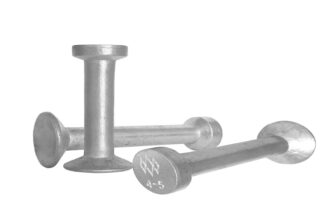The manufacturing and distribution of excavator parts is no longer a manual, slow-moving process. In recent years, digital tools have transformed how parts are designed, tracked, produced, and delivered. These changes are not just happening in supply chains or construction sites — they’re reshaping how every excavator parts manufacturer operates from the ground up.
We-Attach, like many in the industry, has evolved to meet this shift. By adopting digital manufacturing systems, smarter logistics, and connected inventory tools, producers are improving speed, accuracy, and service reliability. The modern excavator parts supply model is faster, leaner, and more data-driven than ever before.
From Blueprint to Shop Floor: Smarter Production Planning
Digital transformation starts where parts are born — in the factory. Today’s excavator parts are often designed using advanced CAD software and simulation tools that allow manufacturers to test durability and performance before anything is produced.
Once design is finalized, smart production systems take over. Many excavator parts manufacturers, including We-Attach, now use automated machining and real-time scheduling tools to manage workflows. These systems reduce production errors and help match output to demand more precisely.
As a result, custom orders can be completed faster, batch quality improves, and lead times shrink. For construction firms relying on timely delivery, these improvements are more than technical upgrades — they directly affect project timelines.
Digital Labeling and Traceability from Day One
One of the biggest innovations in manufacturing is end-to-end traceability. Excavator parts today are often tagged, coded, or serialized at the production stage so they can be tracked throughout their lifecycle.
This benefits both the manufacturer and the customer. When a hydraulic cylinder or undercarriage component leaves the facility, its origin, batch number, and test records are already stored digitally. That makes it easier to manage warranties, verify specs, and resolve issues in the field.
We-Attach, as a parts manufacturer with global clients, has built digital tagging into its quality assurance workflow. This makes the transition from warehouse to job site more transparent — and helps contractors maintain accurate service records on their equipment.
Connecting Manufacturing to Real-World Equipment Use
The real value of digitized manufacturing appears when parts performance is tied to actual usage data. Telematics systems on modern excavators now provide insights on engine hours, wear cycles, and part condition. That data is beginning to inform how parts are made, when they’re replaced, and how manufacturers support their clients.
For example, if contractors frequently replace specific wear parts every 1,000 hours, manufacturers can adjust material specs, change production batches, or offer recommendations based on observed field performance.
This is where companies like We-Attach are building competitive strength. As an excavator parts manufacturer, understanding not just how a part is made but how it performs in different conditions becomes a key business advantage. It closes the loop between the factory and the field.
Smarter Supply Chains Start at the Manufacturer Level
The moment a part is made, its journey begins. Traditionally, excavator parts moved through multiple intermediaries before reaching the contractor. But digitization is allowing manufacturers to bypass some of these steps and ship directly to regional hubs, rental fleets, or large construction firms.
Inventory systems are increasingly synced between the buyer and supplier. A contractor’s usage data can inform the manufacturer’s production planning. Stockouts and over-ordering become easier to avoid.
We-Attach works with contractors who share demand forecasts and usage cycles directly with its manufacturing team. That collaboration helps reduce downtime for customers and improves batch planning on the factory side.
Mobile Tools in the Manufacturing Ecosystem
Digitization doesn’t stop at the production line. Mobile tools now let field technicians scan a part, verify its origin, check its compatibility, and request a reorder — all in one platform.
To support this shift, excavator parts manufacturers are making product data accessible from anywhere. We-Attach, for instance, provides QR-coded access to technical specs, service intervals, and part history directly from a smartphone.
This isn’t just convenience. It’s a strategy to reduce friction across the entire service chain. With fewer calls to vendors and faster part identification, contractors avoid unnecessary delays — and manufacturers get cleaner data on product usage.
Integrated Platforms Bring Everything Together
Modern parts manufacturing is increasingly connected to ERP systems, customer inventory platforms, and even predictive maintenance tools. When these systems are integrated, they allow automated workflows from production to field.
A machine sensor may detect wear, which triggers a reorder through the contractor’s system, which in turn communicates with the manufacturer’s logistics platform. No manual entry. No delay. Just fast, accurate movement of critical components.
We-Attach supports this model by offering API access and platform integrations for high-volume buyers. These connections help align production output with real-world demand while reducing admin costs for both parties.
Manufacturing Isn’t Just About Making Parts Anymore
To stay competitive, an excavator parts manufacturer must now think beyond machining and materials. Manufacturing today involves service design, logistics, customer data, and field intelligence. The companies that adapt fastest are the ones who see manufacturing as part of a larger digital system.
We-Attach is one example of this shift. With investments in data visibility, mobile support, and smart integration, it operates not just as a factory, but as a partner in uptime management.
For construction firms, the implications are clear. Choosing a parts supplier is no longer just about cost or proximity. It’s about responsiveness, compatibility with digital workflows, and the ability to grow together as technology evolves.

















